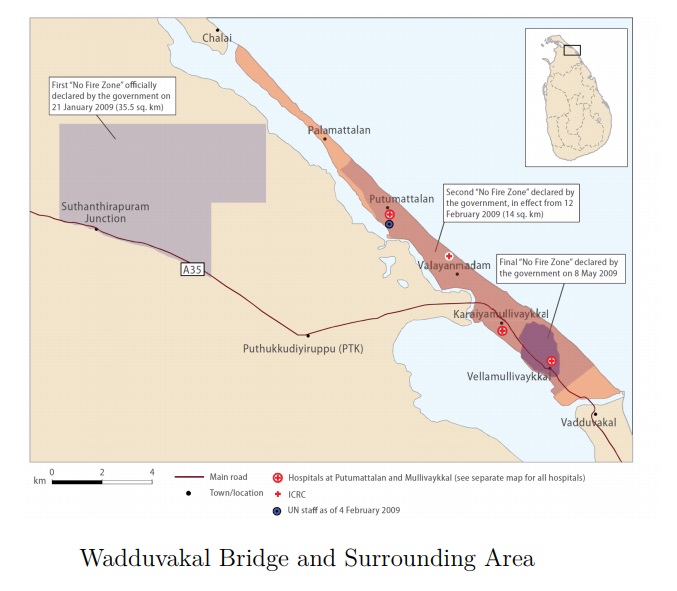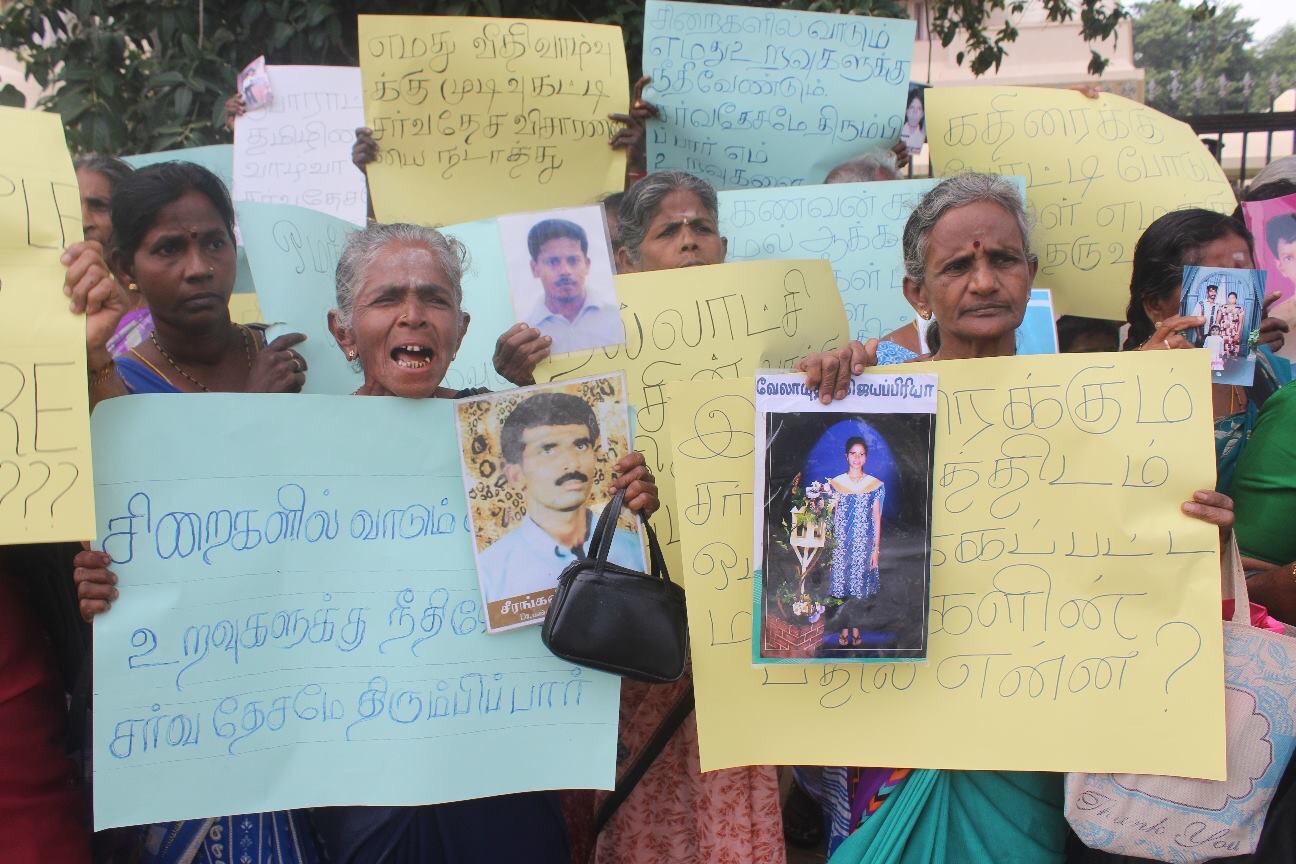A new study has estimated that over 500 Tamils were forcibly disappeared in just three days, after surrendering to the Sri Lankan army in May 2009.
The study, carried out by the Human Rights Data Analysis Group and the International Truth and Justice Project, based on compiled lists which identify those who were known to have surrendered, estimated that 503 people had been forcibly disappeared between the 17th- 19th of May 2009.
The disappeared include an elderly Tamil Catholic priest Father Francis Joseph, LTTE cadres and civilians who all surrendered to Sri Lankan troops at Mulliavaikkal. The study commented that this event “was extraordinary by the number of people disappeared in one location and in a very brief period”.
The findings have reinforced calls for investigation and accountability of the disappearances said the ITJP. “The sheer scale of enforced disappearance after surrender in 2009 warrants immediate investigation,” ITJP’s Executive Director, Yasmin Sooka said in a press release this morning.

The methodology used in the study has been long established and used in other examples from around the world said the Human Rights Data Analysis Group. “The key with a report like this is to remember that we start with a list of fully-identified victims,” statistician Dr Patrick Ball from HRDAG told the Tamil Guardian. “We know their names and locations and dates of death or disappearance. This is quite specific information.”
From there statisticians examined several lists with names of identified individuals and were able to produce the final estimated figure. “The estimation procedure has been in active research in the mathematical statistics community for decades,” Ball added.
Ball has previously used this method to estimate the number of people killed by the military in Guatemala from 1982-1983 and presented his work as evidence in support of the prosecution's argument that former dictator Efraín Ríos Montt committed genocide.
“The thing about science is that if the data is approximately right, the method is sound, and the assumptions hold, the results are very likely to be right,” Ball continued. “There is a 95% probability that the true total number of disappeared people falls in the range from 468 to 554.”
The findings represent one of the single largest forcible disappearance events on the island, which has been plagued with a long history of abductions and violence agains Tamils. “These people disappeared not in the fog of war, but after being taken into custody by the Sri Lankan Army and the Government of Sri Lanka,” the study commented.
“In 2011 the first report cited 20 disappearances , then we found 103 names in 2014, earlier this year it rose to 280 and now our colleagues at HRDAG believe it’s as many as 500 people,” Sooka added. “This shows the importance of continuing to gather information and the need to do this both inside Sri Lanka and outside where many of the key witnesses from the war period have fled.”

She went on to state that despite all the records of disappearances during the final phase of the armed conflict, little action has been taken by Colombo to interrogate members of the military over the issue.
“Instead, almost a decade has elapsed and nobody has yet questioned the commander of the 58 Division of the Sri Lankan Army whom we know, from UN reports and witness testimony, was present at these surrenders,” she said.
“It is a total affront to the families of the disappeared that Major General Shavendra Silva has been promoted to Adjutant General, which ironically put him in charge of the army’s human rights directorate. The families must have answers – they deserve to know the truth and have a right to the truth.”
The study comes as relatives of the disappeared staged yet another demonstration this week, as they continue to search for answers on the whereabouts of their loved ones. Many of the families who continue to protest, have relatives who were missing form those three days.
“These five hundred families have waited for more than three thousand days and nights for their loved ones to return,” Frances Harrison, a human rights activist with the ITJP, said to the Tamil Guardian.
“That is such a huge ocean of suffering with no end in sight. I can’t imagine how they keep going - and I simply do not understand why they - and the other families of the thousands of disappeared - are not the number one priority for everyone in Sri Lanka. They have a right to the truth and they deserve more respect.”
“The first step, as ITJP has repeatedly said, is to call the 58 Division commander and his brigade commanders and ask them what happened to the people they took into custody,” she continued.
“You don’t just misplace 500 people."

Tamil families of the disappeared protesting in Mullaitivu on Monday.
See the full text of the study here.
